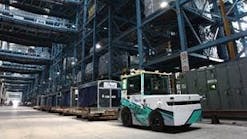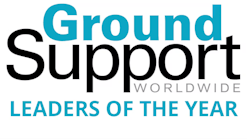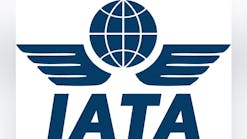Canada Holds National Air Accessibility Summit
The Government of Canada is committed to ensuring that Canada is barrier-free. This includes a fully accessible transportation system. This is vital to ensure that all Canadians, including those with disabilities, have equal opportunities to contribute and participate fully in society.
Canadians with disabilities still face many barriers while travelling. On May 9, the Minister of Transport, Pablo Rodriguez, and Minister of Diversity, Inclusion and Persons with Disabilities, Kamal Khera hosted a National Air Accessibility Summit. They brought together members from the disability community, the aviation industry, all orders of government, and international partners.
The summit allowed for productive discussions about:
- removing barriers faced by persons with disabilities when travelling by air;
- identifying solutions to help ensure a more consistent travel experience for all; and
- reporting on progress since the coming into force of the Accessible Canada Act and the Accessible Transportation for Persons with Disabilities Regulations.
These discussions resulted in the following commitments:
- All partners agreed to seek out ways to ensure seamless travel for persons with disabilities, to make air travel more inclusive and enjoyable for all;
- Industry will work together to streamline processes and adopt a common medical form for passengers with disabilities to simplify their travel preparation and as well as explore ways to collect and share data with government representatives; and
- The Government of Canada will take a leadership role with international partners to promote better passenger experiences for persons with disabilities.
The Government of Canada will work to further enhance accessible travel for everyone.
“Our government is committed to removing barriers to air travel. This summit served as an opportunity to bring parties to the table to work together. Because it's only by working together that we can ensure that air travel is accessible to all passengers, for all Canadians.”
The Honourable Pablo Rodriguez
Minister of Transport
"Canada’s first ever National Air Accessibility Summit convened actors from across the air transportation sector so that together we can take” a coordinated and deliberate approach to making air travel barrier-free for Canadians with disabilities. As a result of the Summit, we were able to agree on short-term solutions to improve accessibility in addition to having ongoing conversations as to how we can continue to break down barriers to accessibility in the long-term.”
The Honourable Kamal Khera
Minister of Diversity, Inclusion and Persons with Disabilities
Quick facts
-
On June 21, 2019, the Accessible Canada Act, which commits to achieve a barrier-free Canada by 2040, received Royal Assent.
-
Through a proactive and systemic approach, the Accessible Canada Act aims to identify, remove, and prevent accessibility barriers in seven priority areas within the federal jurisdiction, including transportation (airlines, as well as rail, road and marine transportation providers that cross provincial or international borders).
-
The Accessible Transportation for Persons with Disabilities Regulations (June 2019) were developed to protect the human rights of persons with disabilities to an accessible transportation network. They provide mandatory requirements across different modes of transportation: air, passenger rail, marine, and bus, as well as security and border screening.
-
The Accessible Transportation Planning and Reporting Regulations (December 2021) were developed to proactively identify and remove barriers for persons with disabilities who use services offered by federally regulated transportation service providers, as well as prevent new barriers from emerging.
-
The diverse perspectives and experiences were acknowledged and respected. Participants included representatives from diverse organizations of persons with disabilities, as well as representatives from the Indigenous communities. Industry representatives included airlines, airports, aircraft manufacturers, and unions. Along with Transport Canada and Employment and Social Development Canada, Government representatives included Accessibility Standards Canada, the Canadian Air Transport Security Authority, the Canada Border Services Agency, and the Canadian Transportation Agency.




